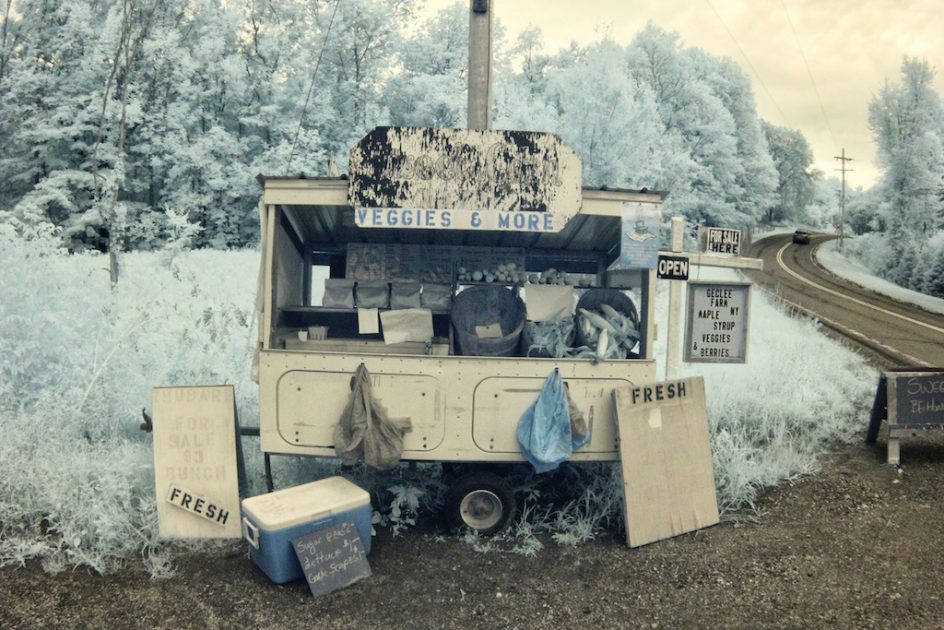
Every year I choose my favorite farm stand of the year and take a photo of it.
Farm stands are not just appealing things on the roadside to tickle tourists, they are the purest form of the farm economy, they bring fresh and healthy and good food directly to people without expensive middlemen, their food is invariably healthy and cherished. We know where it comes from, it is, by nature of its closeness, almost shockingly inexpensive.
In the summer, Maria and I eat out of farm stands, we live off of farm stands, we eat corn, vegetables and fruit. We can skip the big supermarkets and their mostly processed frozen food for months.
Nutritionists tell us that if you want to survive supermarkets, stay on the outside aisles, never go in the middle. If you want to experience a farm stand, you can go anywhere for fresh and healthy food.
Farm stands are, to me, how the farm and food economy was meant to be, how it was before the economists and politicians decided small farms were no longer efficient. Think about it: farmers growing good food and selling it directly and nearby to people. The drive to market takes a few hundred yards.
Our agricultural system has become a cumbersome, expensive and irrational nightmare, the food we eat is most often flown from faraway places, we have no idea where it comes from, what is in it, how it is grown, and whether it is good for us. And it is the most expensive way on earth to grow, transport, store and buy food.
Agriculture, says the poet, author and environmentalist Wendell Berry, is not about feeding the world or feeding the hungry, rising as it does out of the death struggles of farmer with farmer. It proposes not the filling of stomachs, but the engorgement of the corporate bottom line.
The cult of competition, he writes, which holds there must be losers as well as winners, is that competition is good for everybody.
In agriculture, competitiveness has been based throughout modern history and the industrial era on constantly accelerating technological change – the very principle of agricultural competitiveness, he writes, is ever-accelerating change, and this has encouraged an ever-accelerating dependency on purchased products, products purchased ever farther away from home, food that often requires disguise, coloring, preservation, processing and transport.
Community does not thrive on change, it needs stability. And farming communities have been shattered by relentless instability for half-a-century, with the enthusiastic blessing of big government and big business.
Farm stands to me are not just quaint and evocative, they represent the purest and most efficient and most community-centered idea of agriculture and food. They bring farmers close to us, and us close to them. They connect us to nature and the earth. They are inexpensive, shockingly efficient, they waste few natural resources, they feed their neighbors and community, they permit small farmers to stay on their land and work their fields.
As the small farms perish under the government/corporate onslaught, we see fewer and fewer of these farm stands, they can hardly compete with the mega-supermarkets that import our food from all over the earth at great cost. So it is important for me to notice them and honor them.
This stand is my farm stand for 2016, it is not too far from my home, it sells corn and veggies and more. It runs, like many farm stands on the honor system. You take what you want, stuff it in a bag, and slip the money into a cash box with a small lock on it. I trust the food, the farmer trusts me.
This stand, from the Geclee Farm, is my 2016 farm stand of the year. It is, for me, the past and the future.
